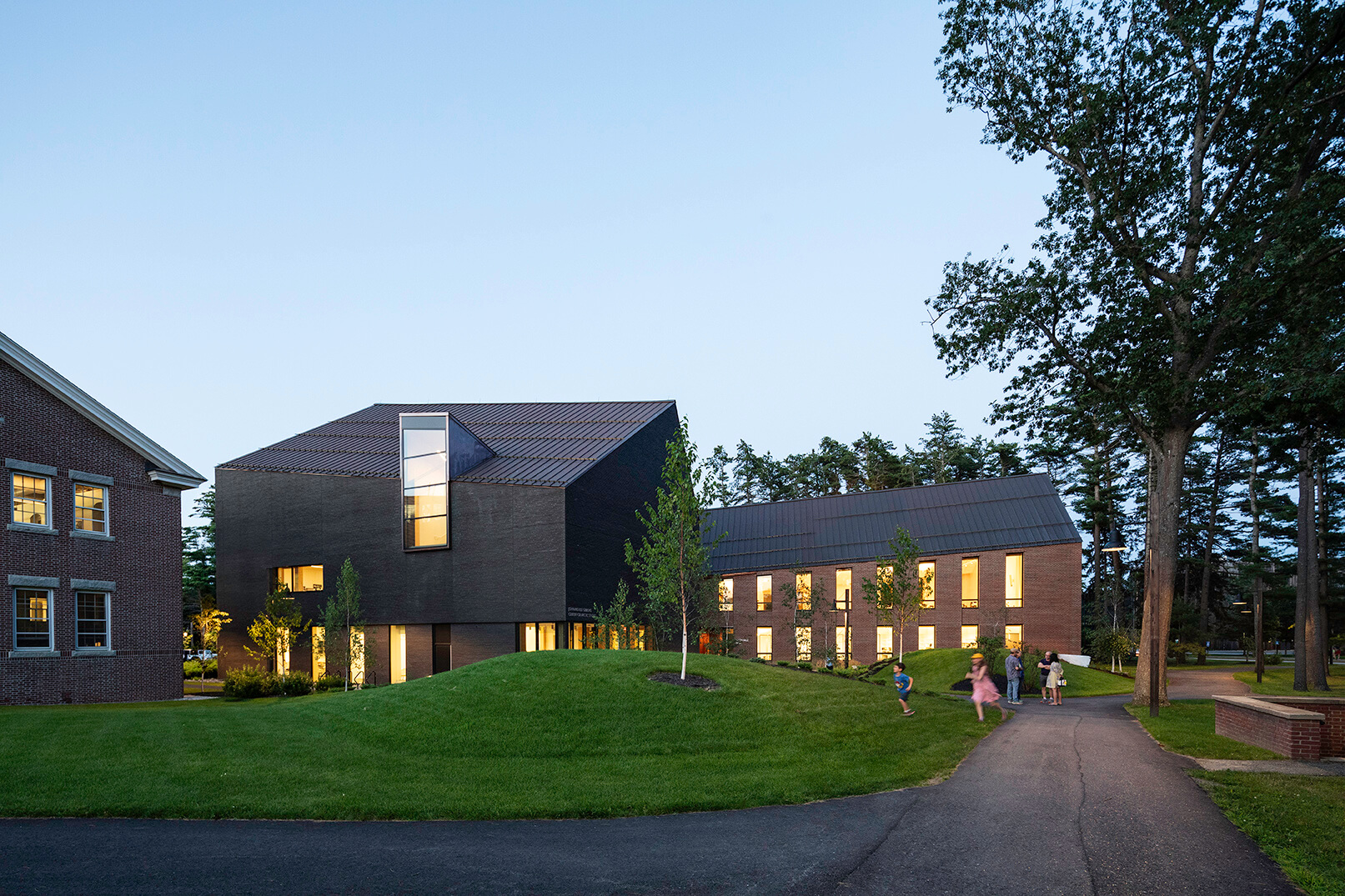
Located on the southeast corner of the Bowdoin College campus are two beautiful new log buildings designed by Boston firm HGA. Barry Mills Hall and the John and Lyle Gibbons Center for Arctic Studies both opened their doors this semester, marking the first commercial-scale mass timber buildings in Maine – a state known for its abundant forests.
Cumulatively, the new buildings add 46,000 square feet of new teaching, research and museum space to the historic campus of Bowdoin College in Brunswick, Maine. The buildings replaced the existing parking lot on campus. They both share a harmonious wooden expression inside, but they differ in their external presence compared to the colors. Mills Hall features the campus’ red color — a nod to Bowdoin’s historic brick buildings — while the Gibbons Center features mottled black, HGA noted in a project description.
HGA also noted that both buildings share steeply angled rooflines that compete with each other from different vantage points. This is intended to frame the new campus gateway to the north which meanders south to Dudley Coe Quad.
Mills Hall is a distinguished two-story academic building that hosts Bowdoin College’s Departments of Digital and Computational Studies and Anthropology. This building includes a 60-person cinema, four classrooms for active learning, 12 faculty offices, a huddle space for student collaboration, and a domed event space for 300 people. Classrooms and offices within Mills Hall enjoy abundant daylight, high ceilings, and openable windows for natural ventilation.
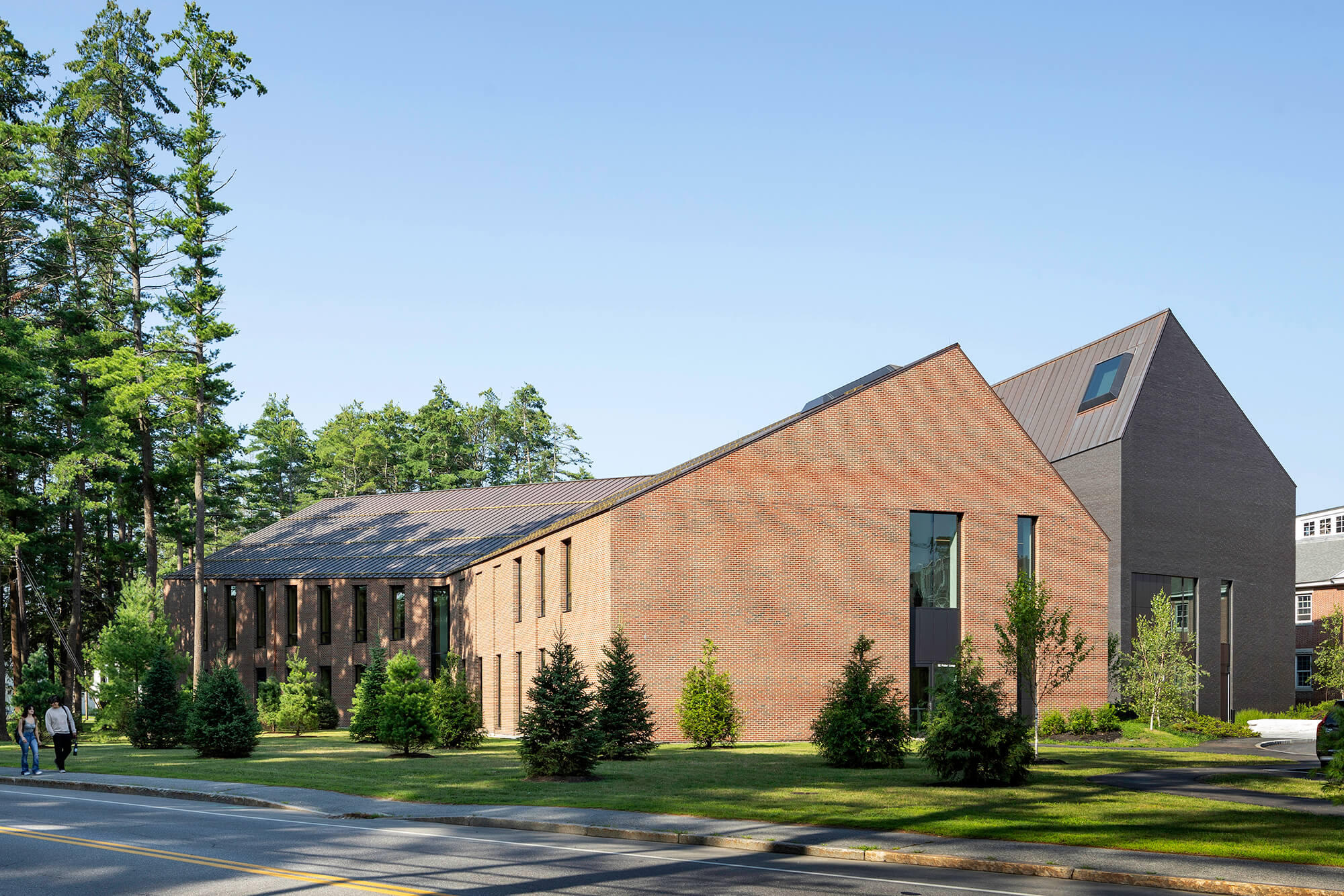
Across the road, the Gibbons Center for Arctic Studies hosts an interdisciplinary center dedicated to research and education about the Arctic. This center also has a museum dedicated to the subject, the Bowdoin Perry MacMillan Arctic Museum.
The Gibbons Center also contains a spacious lobby, storage and collection support, offices, classrooms, and an archeology laboratory. It features a high-performance building envelope and strict environmental controls that allow the museum to safely display sensitive artifacts. The steep roofline can be said to mimic the geometry of epic Arctic glaciers.
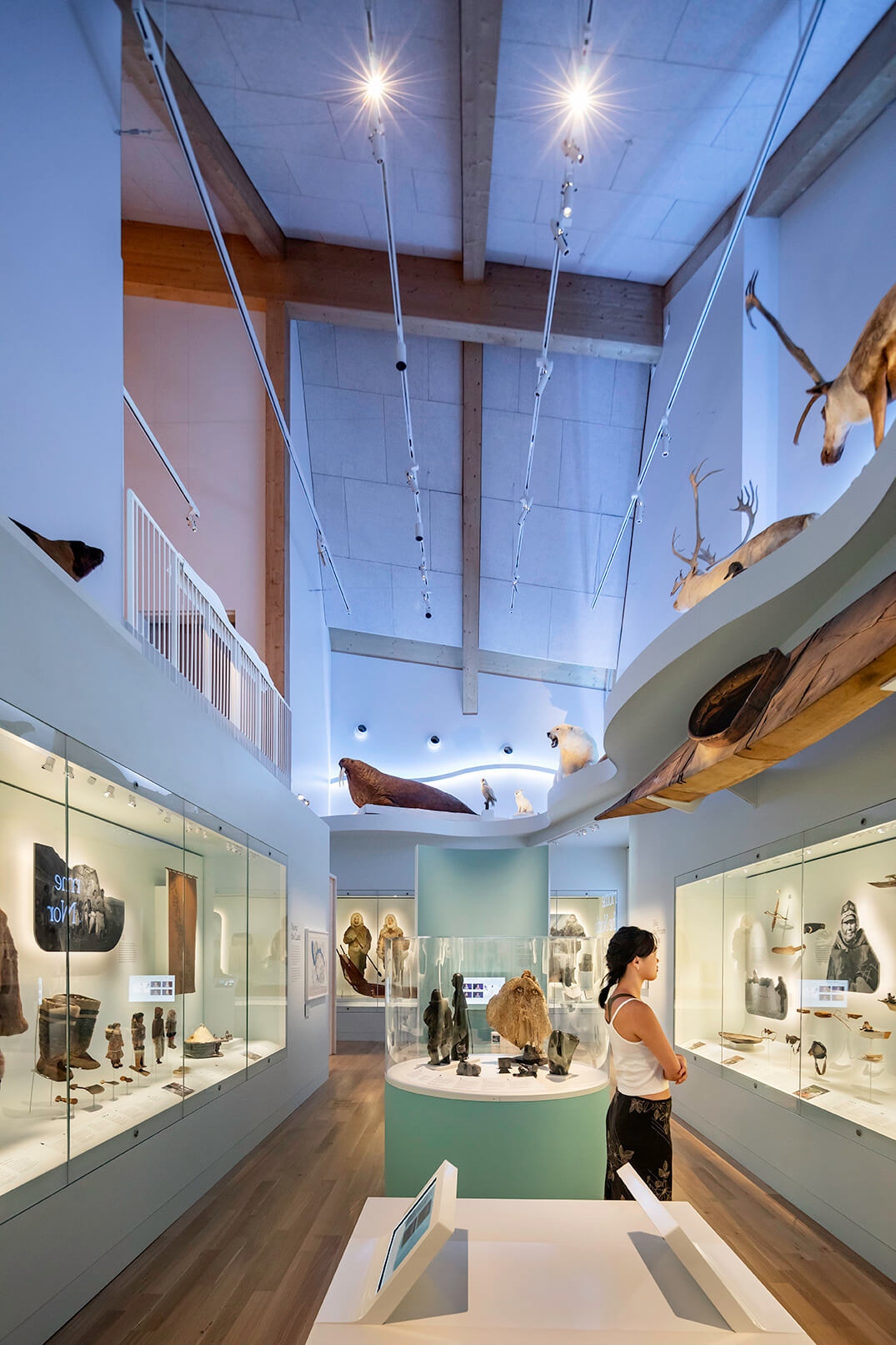
Bowdoin achieved net neutrality in 2018, but continues to move away from fossil fuel consumption. For carbon offsetting, HGA has identified 80 new regional trees to be planted in a white pine grove adjacent to the site to replace those lost for construction purposes.
By choosing wood rather than steel for the building’s framing, the comprehensive timber structural system designed by HGA reduced nearly 75 percent of embodied carbon. Furthermore, all-electric building systems promote a lower net operational carbon footprint further enabling non-fossil fuel development.
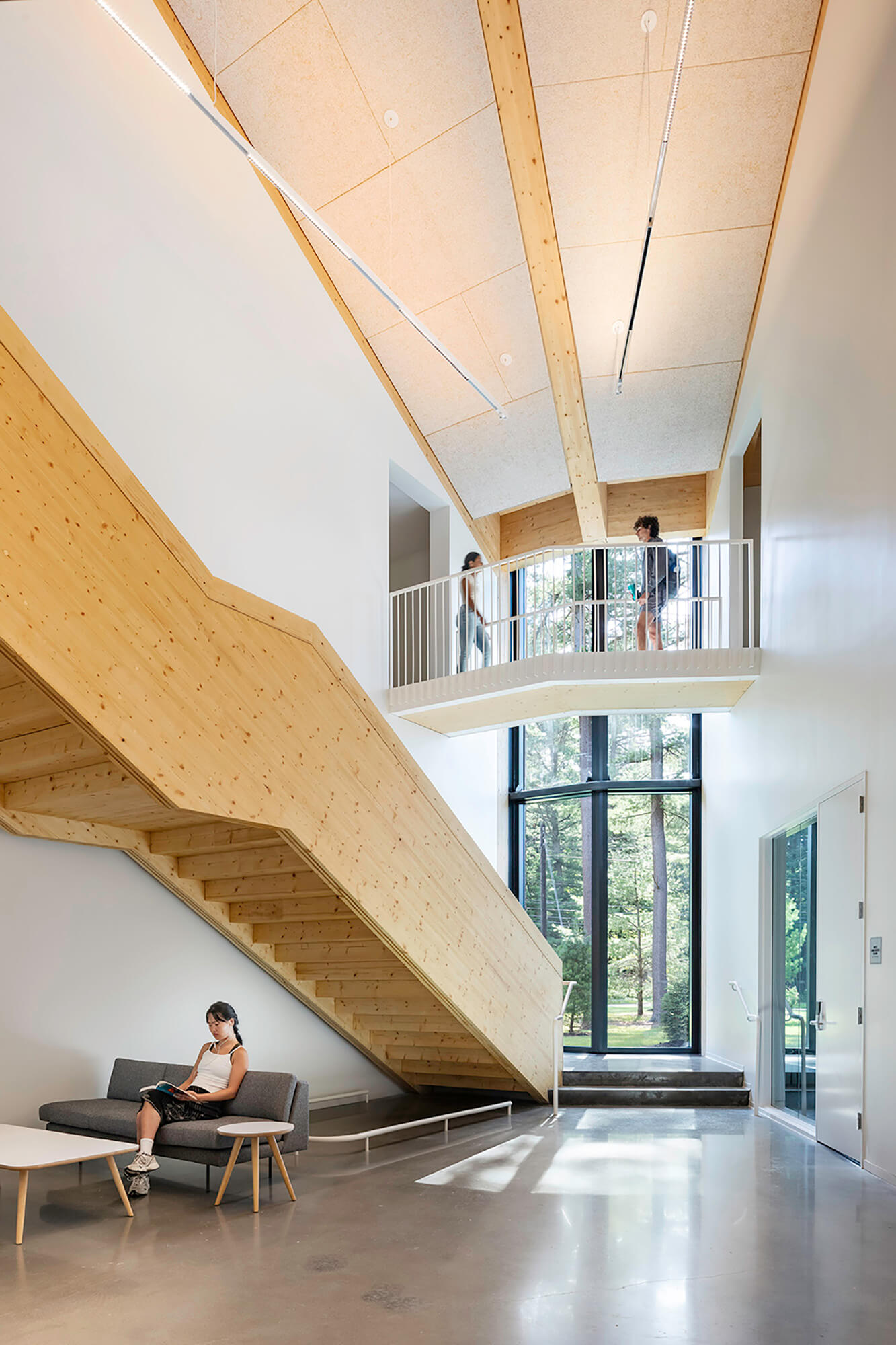
Bowdoin College is known globally for faculty and departments committed to combating climate change. It is clear that the new buildings created by HGA are in keeping with the values of the historic institution. Rebecca Seles, HGA Director and Head of Arts, Community and Education, added: “This project was an opportunity for Bowdoin to demonstrate its commitment to sustainability, not only through high-performance buildings, but also through investment in generous and flexible learning, teaching and research spaces. These buildings will Developing Bowdoin’s teaching and research capabilities while embracing the environmental spirit of the college.
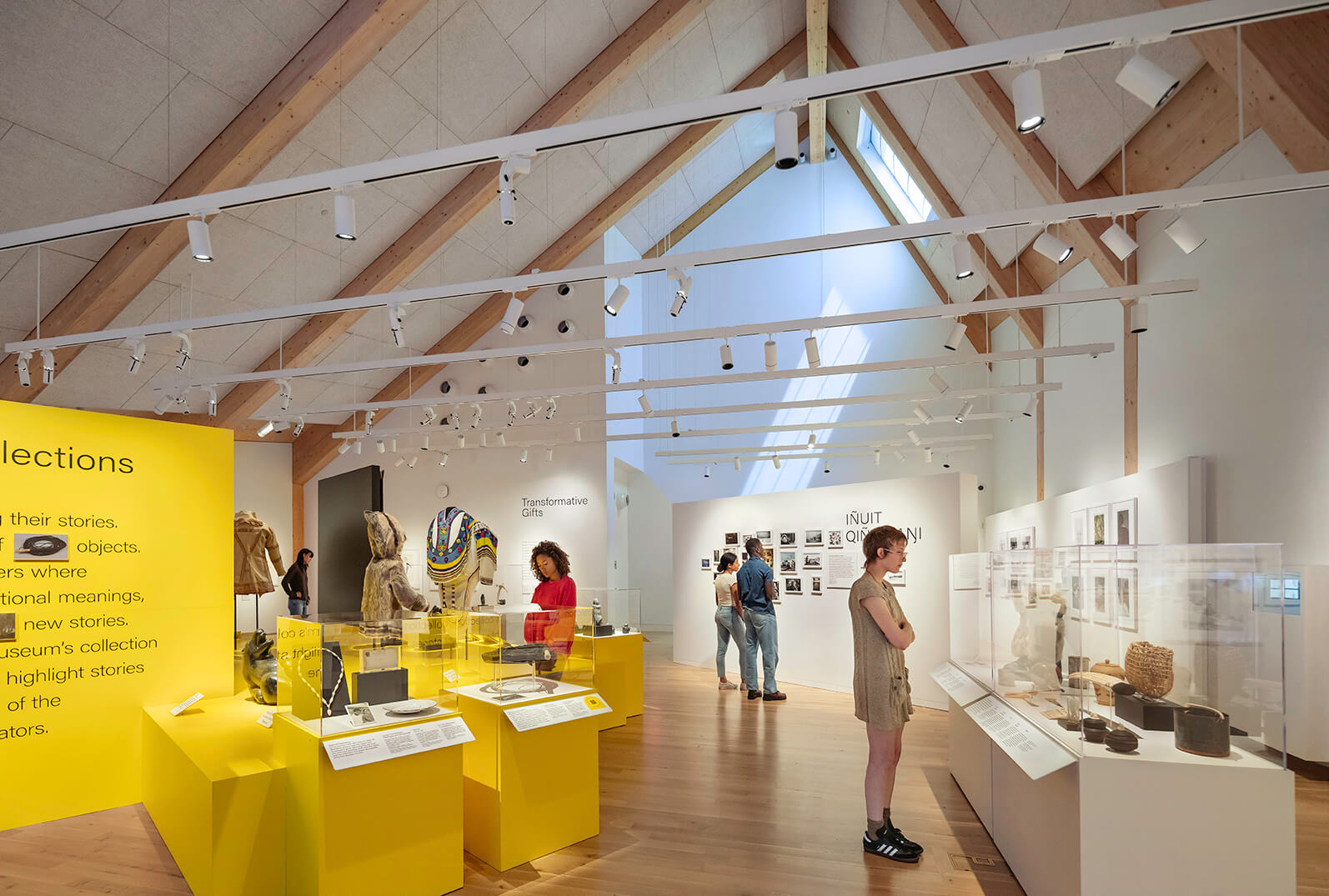
Matt Orlando, Bowdoin’s senior vice president of finance and administration, praised the design team, adding, “Bowdoin, Consigli and HGA were motivated to seek out timber for its environmental benefits, Maine’s cultural identity as a ‘working forest,’ its potential and its positive economic impact on the region. This project pushes us to On the road to being fossil fuel-free on campus, but it’s also a way to showcase Maine’s massive timber and sustainable design.
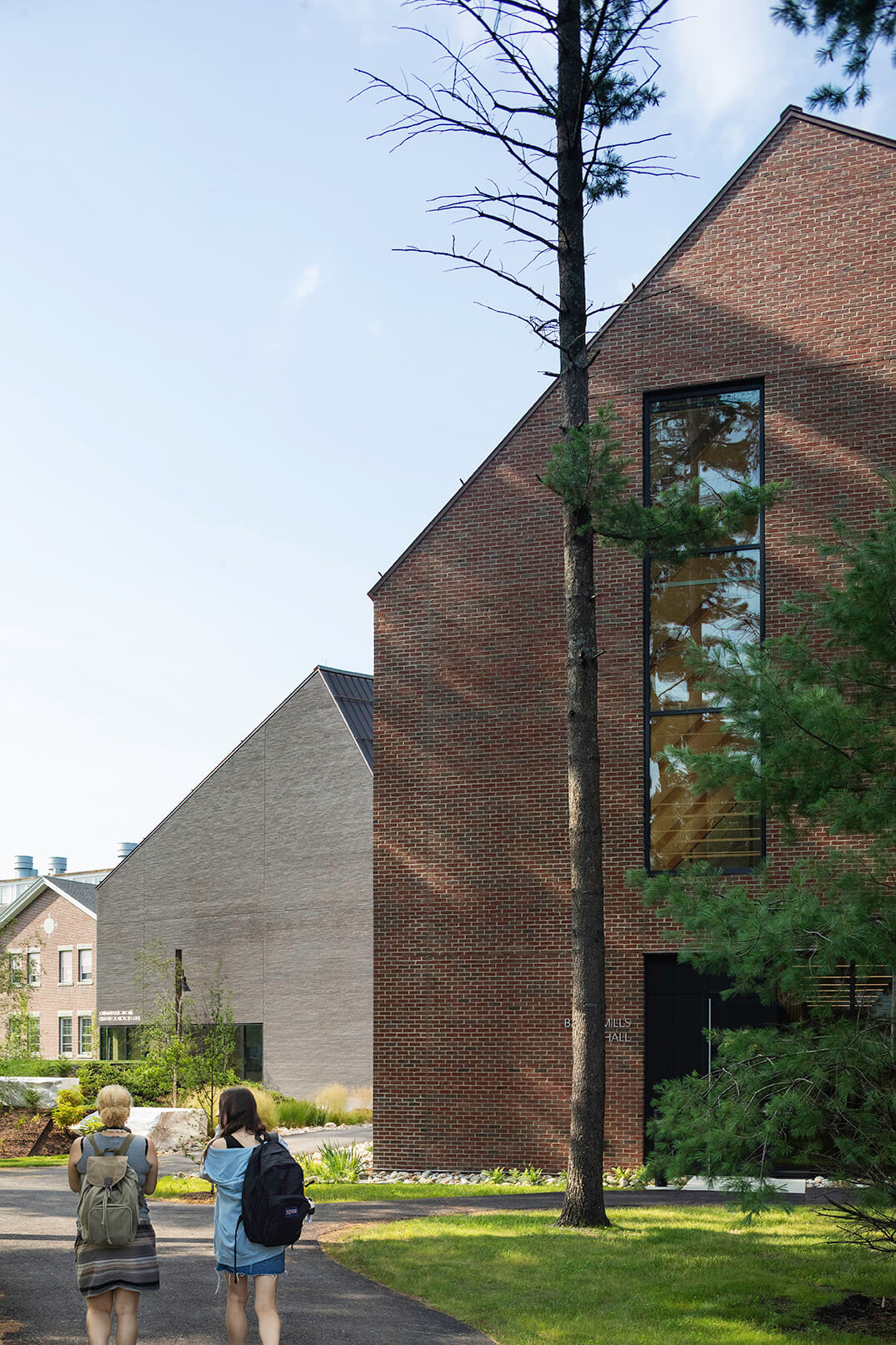
The project adds to HGA’s demonstrated history of working with mass timber. Previously, the company built other large timber projects in Minnesota and Arkansas. The company’s recently completed projects in Bowdoin prove that high-performance, sustainable buildings don’t need to compromise on aesthetics. “Gibbons have a more mysterious, introverted quality,” said Nat Madson, design director at HGA. “Black brick makes the building look like a silhouette, while a lighthouse-like window overlooks the Quad, revealing views of the galleries from the campus.”

